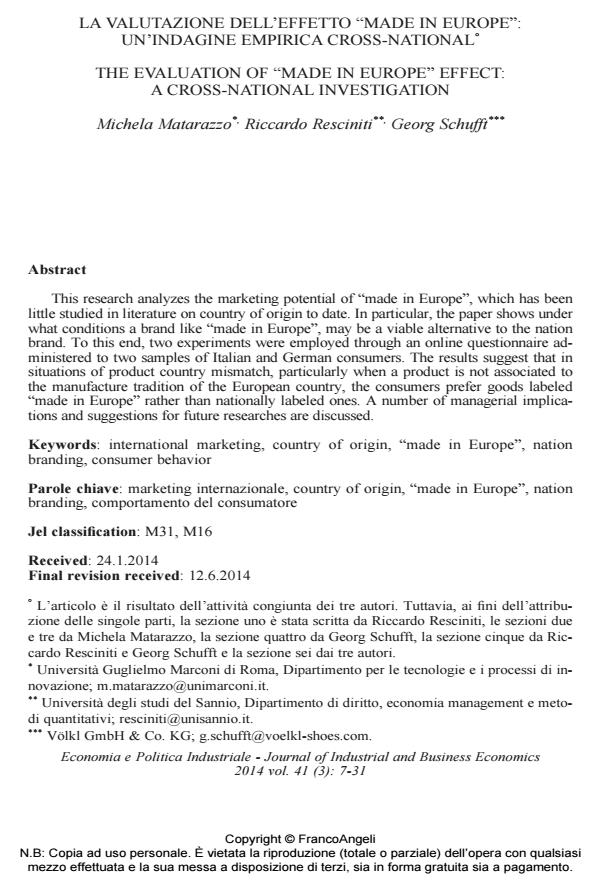La valutazione dell’effetto "made in Europe": un’indagine empirica cross-national
Titolo Rivista ECONOMIA E POLITICA INDUSTRIALE
Autori/Curatori Michela Matarazzo, Riccardo Resciniti, Georg Schufft
Anno di pubblicazione 2014 Fascicolo 2014/3
Lingua Italiano Numero pagine 25 P. 7-31 Dimensione file 97 KB
DOI 10.3280/POLI2014-003001
Il DOI è il codice a barre della proprietà intellettuale: per saperne di più
clicca qui
Qui sotto puoi vedere in anteprima la prima pagina di questo articolo.
Se questo articolo ti interessa, lo puoi acquistare (e scaricare in formato pdf) seguendo le facili indicazioni per acquistare il download credit. Acquista Download Credits per scaricare questo Articolo in formato PDF

FrancoAngeli è membro della Publishers International Linking Association, Inc (PILA)associazione indipendente e non profit per facilitare (attraverso i servizi tecnologici implementati da CrossRef.org) l’accesso degli studiosi ai contenuti digitali nelle pubblicazioni professionali e scientifiche
This research analyzes the marketing potential of "made in Europe", which has been little studied in literature on country of origin to date. In particular, the paper shows under what conditions a brand like "made in Europe", may be a viable alternative to the nation brand. To this end, two experiments were employed through an online questionnaire administered to two samples of Italian and German consumers. The results suggest that in situations of product country mismatch, particularly when a product is not associated to the manufacture tradition of the European country, the consumers prefer goods labeled "made in Europe" rather than nationally labeled ones. A number of managerial implications and suggestions for future researches are discussed.
Parole chiave:Marketing internazionale, country of origin, "made in Europe", nation branding, comportamento del consumatore
Jel codes:M31, M16
Michela Matarazzo, Riccardo Resciniti, Georg Schufft, La valutazione dell’effetto "made in Europe": un’indagine empirica cross-national in "ECONOMIA E POLITICA INDUSTRIALE " 3/2014, pp 7-31, DOI: 10.3280/POLI2014-003001